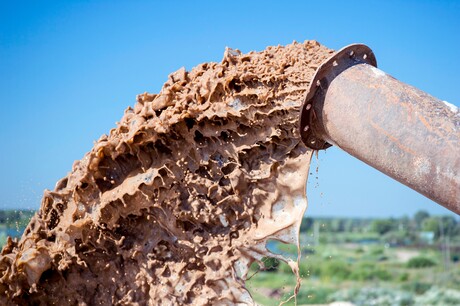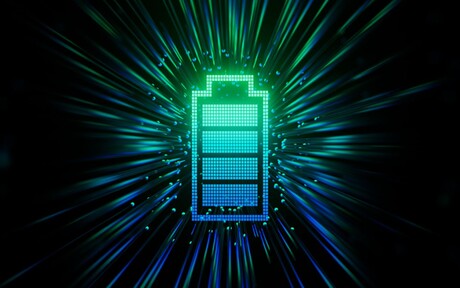Sludge treatment: a weighty issue

How Indigenous Wisdom Can Support Youth Mental Health (Blog)
September 25, 2024
Liquid metal could be key to greener ammonia
September 27, 2024Sludge dewatering might not be the most glamorous process, but it is a vital part of ensuring compliance with a host of regulations affecting both municipalities and industry. Beyond this, efficient sludge treatment can transform OHS and pollution hazards into recyclables.
Concisely defined, sludge dewatering is the practice of minimising waste by volume to prepare the biosolids involved for effective disposal or re-use. This process helps to avoid sloppy, hazardous spillages as the waste is transported at great expense to increasingly rare disposal facilities.
This is no small undertaking. The Australia and New Zealand Biosolids Partnership* estimated this year that annual dry biosolids production has risen to 372,000 tonnes. Dewatered biosolids have a weighted average solids content of about 23%; this equates to 1.6 million tonnes of dewatered biosolids being carried around Australia in 2022/23. More than half of these biosolids were transported 50–400 km for beneficial uses, including the improvement of agricultural land and reclamations sites, including mine sites.
Australian and New Zealand wastewater authority Michael Bambridge explained that sludge is produced during almost every wastewater treatment process undertaken before the water can be released back into the environment.
This sludge is a by-product extracted from slurry during the municipal and industrial wastewater treatment of effluents, which can include human waste as well as biological waste from industries such as food and beverage, meat, fish and agribusiness.
Sewage sludge is regarded as having become biosolids once it has undergone further treatment to significantly reduce disease-causing pathogens and volatile organic matter. It is often produced by wastewater treatment plants in remote and environmentally sensitive mining, energy and construction plants, where recycling and the quality of water returned to the environment are priorities.
How sludge dewatering can reduce costs
“Done well, dewatering can be an effective tool to reduce environmental hazards and to curb the expensive costs of transport of transport and disposal, as well as the carbon costs of transporting tens of thousands of tons of sludge over considerable distances,” Bambridge said.
“Disposal costs can be a double whammy, with substantial specialised transport and carbon costs — before they even get to the front gate of the increasingly rare and scattered authorised disposal sites, which must be engineered to stop pollutants leaking into groundwaters, riverine and marine environments.”
Bambridge added that when done poorly, treatment and disposal of wet and sloppy waste can lead to hazards, both for workers involved in removing and loading it, as well as the ground and soil into which it may leak. “There is also strong potential for groundwater contamination if the water removed is not properly treated,” he said.
Bambridge has more than 30 years’ experience in wastewater treatment, installing hundreds of water and wastewater treatment plants, filtration plants, anti-grit technologies from world leader Smith and Loveless, and waste-to-energy plants for major food and beverage organisations.
His company, CST Wastewater Solutions, fully manufactures its rotary drum screen and screw screen/compactors in Australia, thus enhancing quality assurance, environmental outcomes, and availability of backup service during times of stretched supply lines — and in the event of environmental emergencies, with their statutory obligations and reputational risk.
Low-maintenance solutions for SMEs
In addition to WWTPs for some of Australasia’s largest public and private water and industry clients, CST Wastewater Solutions has highlighted the need for better sludge treatment for small to medium public and private organisations. These range from primary production sites (including food and agribusiness) through to remote communities without sewered services, but with strong environmental requirements (e.g., Lord Howe Island). They also include the resources and construction projects that dot the maps of Australia, New Zealand and Papua New Guinea, where there is an expanding consciousness that water is a vital shared community resource that must be protected.
“Water and wastewater treatment and water recycling is not a one-size-fits-all,” Bambridge said.
“You have to engineer quality inputs to get quality outputs, not buy the cheapest and most unsuitable import that appeals only to short-term bargain hunters, who have no experience of what might happen if and when it breaks down or needs service from the other side of the world. Many such short-sighted people will not even be there if, and when, something goes wrong with their cheap deals a few years after they have moved to another job. Water treatment isn’t for bargain hunters.”
To cater for the small to medium end of the market, Bambridge’s company is employing advanced technologies in the region, such as the Japanese-made stainless steel KDS low-maintenance liquid-to-solid waste separator.
“The KDS separator is right for environmentally aware small to medium operations, because it uses a fraction of the power of a centrifuge and consumes no water during operation, unlike a belt press or a screw press. For a relatively low investment cost, it offers a high-performance alternative to sludge drying beds and geobags, for example,” Bambridge said.
The KDS separator
Used for thickening of dissolved air flotation sludge — a common application throughout wastewater operations — the KDS achieves solids capture of 97% thickened sludge at a dryness of 17%, according to the company.
KDS said its technology removes more than 50% of the water from wastewater sludge to provide a 50% per cent reduction in transportation costs. It features a self-cleaning dewatering and conveying system with oval plate separation and transfer structure that prevents clogging and permits automatic continuous operation that handles oily and fibrous material with ease.
Small-to-medium applications for which the separator is designed include:
- sewage treatment, including raw wastewater (primary screening) and sludge to landfill
- remote communities using septic or systems producing low-quality output
- resources and construction sites
- intensive livestock and aquaculture operations, including abattoir, feedlots, fisheries, poultry and dairy farms
- food and beverage processing waste
- pig farm raw manure and sludge
- barrel polishing water, water-based paint wastewater, grease trap waste, dyeing wastewater, waste oil and plastic recycling.
Bambridge emphasised that the KDS system is just one of a variety of tools available to organisations seeking quality solutions for their particular needs. For example, at the large end of the scale, he has installed a large-scale GW&E COHRAL waste-to-energy anaerobic digestion system for the Oakey export meat works of NH Foods. CST Wastewater Solutions has also installed multiple Smith and Loveless FAST (Fixed Activated Sludge Treatment) process self-contained water treatment systems delivered as a container to Australian mine sites.
“As environmentally aware and quality-focused wastewater treatment professionals, we don’t ever propose that just one solution is the answer to all water quality issues — that would be absurd. There are many excellent technologies out there, of which KDS is an example in the small to medium separator category,” Bambridge said.
“Our main message to environmentally responsible organisations is to engineer for future quality of water output and reliability. Don’t just join the race to the bottom, on upfront pricing alone.
“Typically, what that does is transfer problems down the line, where the costs can be far greater. There is always a reason why things are cheap. Our water resources deserve better.”
*The Australian & New Zealand Biosolids Partnership (ANZBP) is a member-based collaboration of utilities, consultants, academics and government bodies committed to the sustainable management of biosolids.







